Welcome, friends, to the last installment of this chapter of the Travelogue.* I write to you already back in Asheville, but I’m excited to relive our final days in Europe as I share them with you.
*Perhaps. There may be a final wrap-up post, but this one covers the last stop on our itinerary.
After leaving Lyon, Andrew and I headed south to the teeming port city of Marseille. France’s second-largest city has a rich, albeit often complicated, history, and we were excited to spend a week and a half exploring it.
The view below was one of the first glimpses of the city we got, a reward earned after climbing several staggering hills up to the Basilique Notre-Dame de la Garde. This vista, with its sweeping sea views and setting sun, was undeniably beautiful; still, it felt a bit strange to look down on dozen-stories-tall buildings and large parking lots instead of the now-familiar centuries-old homes and narrow, cobbled streets. These differences would only continue to reveal themselves as Andrew and I explored the city over the next few days and in fact, on our first full morning in Marseille, Andrew remarked that it reminded him a bit of Los Angeles, if only for its stark non-stereotypically European feel.
Of course, no city is a monolith and the dreamy, postcard-worthy centres-villes are hardly a city’s entirety. Paris has its outer rings of banlieues, crammed full of stark, grey apartments; Lisbon’s tiled sidewalks fade only a few minutes out of the city center and give way to wider streets and louder cars. Even knowing that, Marseille still felt different. It’s hard to say whether it was solely the newer architecture and bustling boulevards or if it was something less tangible, a grit that emanated from somewhere beyond the graffiti and loose trash that lined the streets.
Or maybe other European tourist destinations are simply more insistent on tucking their darker underbellies away at the edges of their borders, are more set on maintaining the illusion of a problem-free paradise. Maybe Marseille is just more comfortable wearing all its many shades out in the open—some glimmering, others dingy.
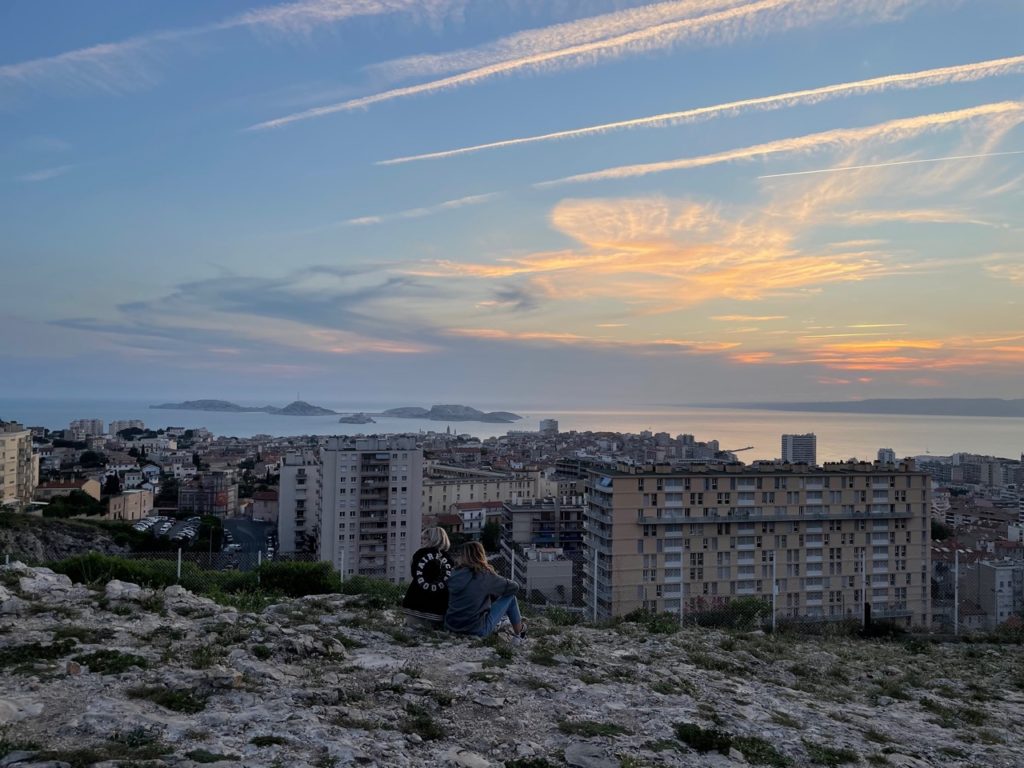
Nine days is rarely enough time to unlock all of a place’s secrets, and with the number of day trips Andrew and I took, we spent far less than that in Marseille proper. But what we may have missed in Marseille, we made up for in our discoveries of the rest of the Provence region. Our first stop took us to Avignon, a small town about an hour away by train, where we wandered tree-lined plazas and looked out over the Rhône, the same river that splits through Lyon. While it may err on the side of sleepy today, Avignon is rich in history. The Palais des Papes is one such marker of the town’s past, a magnificent complex that served as the popes’ residency throughout the 14th century. It’s one of the largest and most important medieval Gothic buildings in Europe.

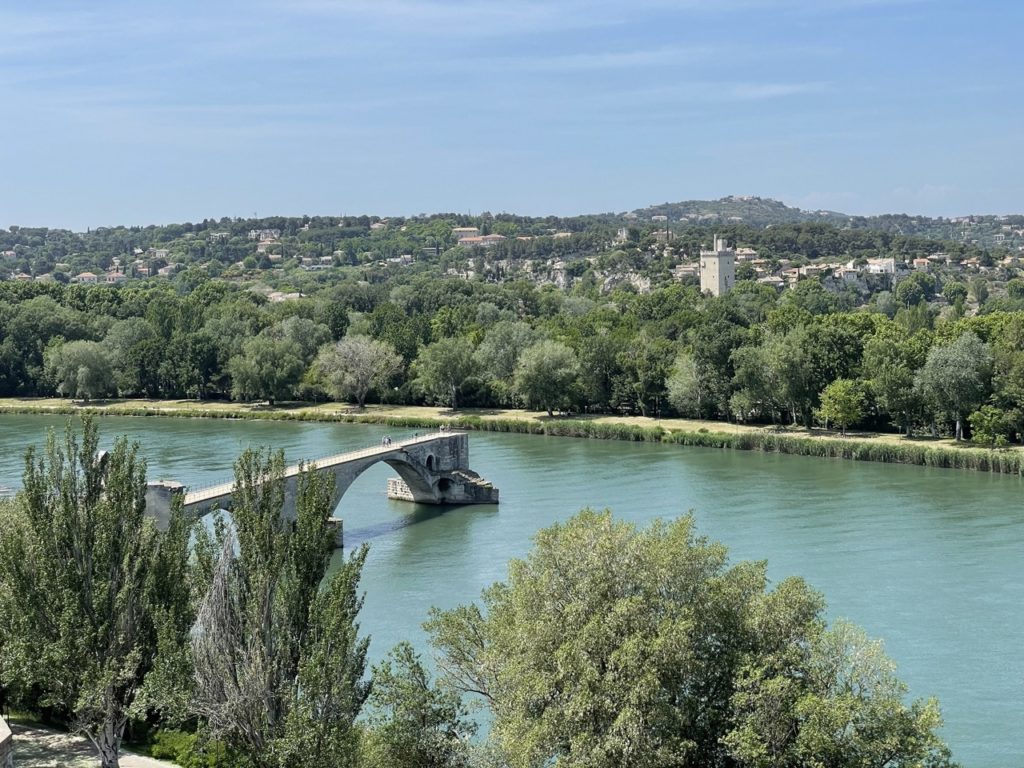
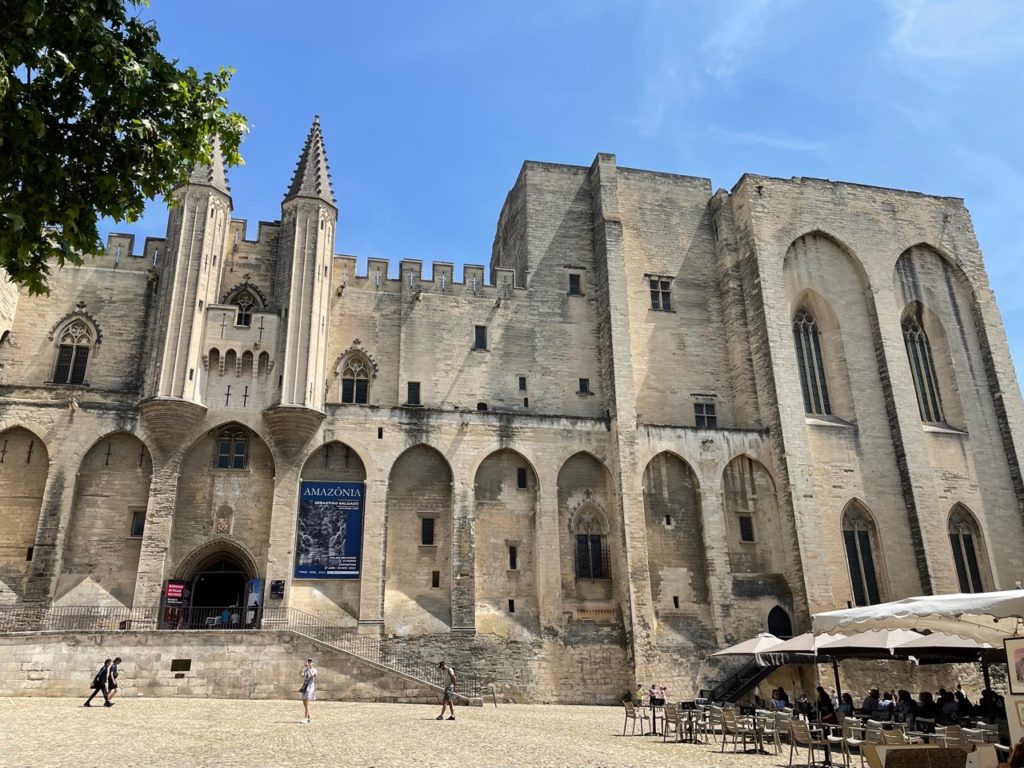
After returning from Avignon, Andrew and I stopped at a restaurant on the way back to our accommodation; at La Rose du Paradis, we had a delicious couscous-based meal and some of the best baklava I’ve ever had in my life. While I haven’t included more photos, this was just the first of many tasty North African and Middle Eastern dinners we’d go on to have during our time in Marseille.
Marseille is an incredibly diverse city, in large part due to its status as an ancient port situated on the edge of the Mediterranean. Since its founding by the Greeks in 600 B.C.E, people from North Africa, Italy, Turkey, Lebanon, and beyond have immigrated to its shores, driven by every factor imaginable (including France’s own ruthless colonization of the Mahgreb). Even two and a half millennia later, the city still wrestles with its identity and what it means to be French, questions all too familiar to us Americans. I’m not sure either of us is doing too great a job at answering them, but that’s a whole other blog post.
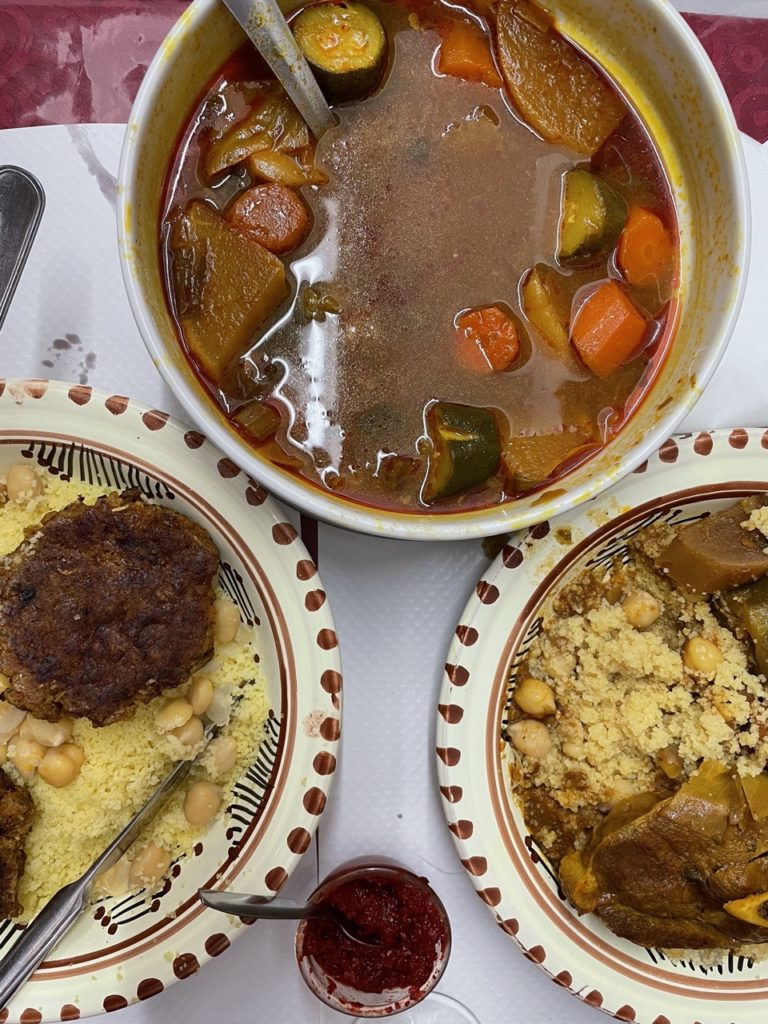
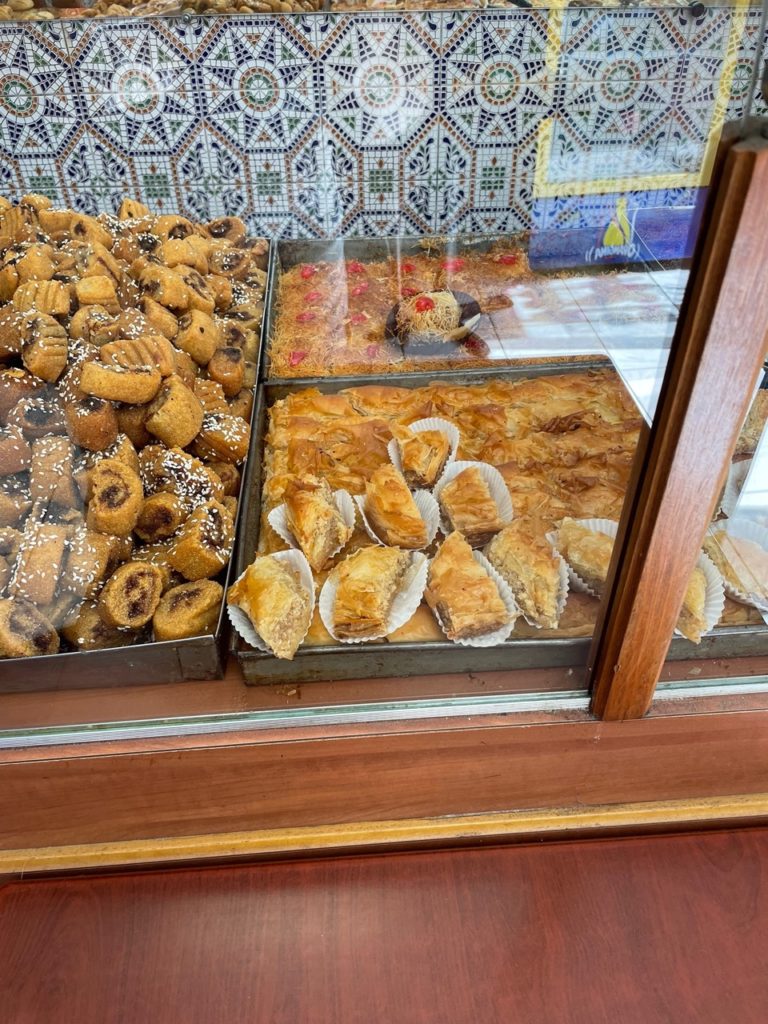
Only a day or two later, Andrew and I set back out again, this time headed just up the coast to the tiny village of Ensuès-la-Redonne in search of a place to swim. On the train there, we inadvertently sat next to a gaggle of Canadian women who didn’t seem to realize our quiet conversations were not in French and so made no effort to filter their absurd back-and-forth. I’ll happily admit I love eavesdropping and as they didn’t realize I spoke their language, I found a delicious freedom in being able to listen openly. One girl mused that the French countryside, remarkably, reminded her of Tokyo—”as in Japan?”—and then feigned mock surprise when her companions admitted none of them had been to the city. I was engrossed.
But then our ride came to an end and all thoughts of human group psychology left my mind when we stepped out of the station. It was immediately apparent we’d chosen a good spot to pass the day.
What La Redonne lacks in, well, everything (read: there was one restaurant and just about nothing else), it makes up for with sweeping views of the Mediterranean and a plethora of rocky beaches (saying I’m not a fan of sand would be putting it lightly, so pebbles were the way to go). I would highly recommend.
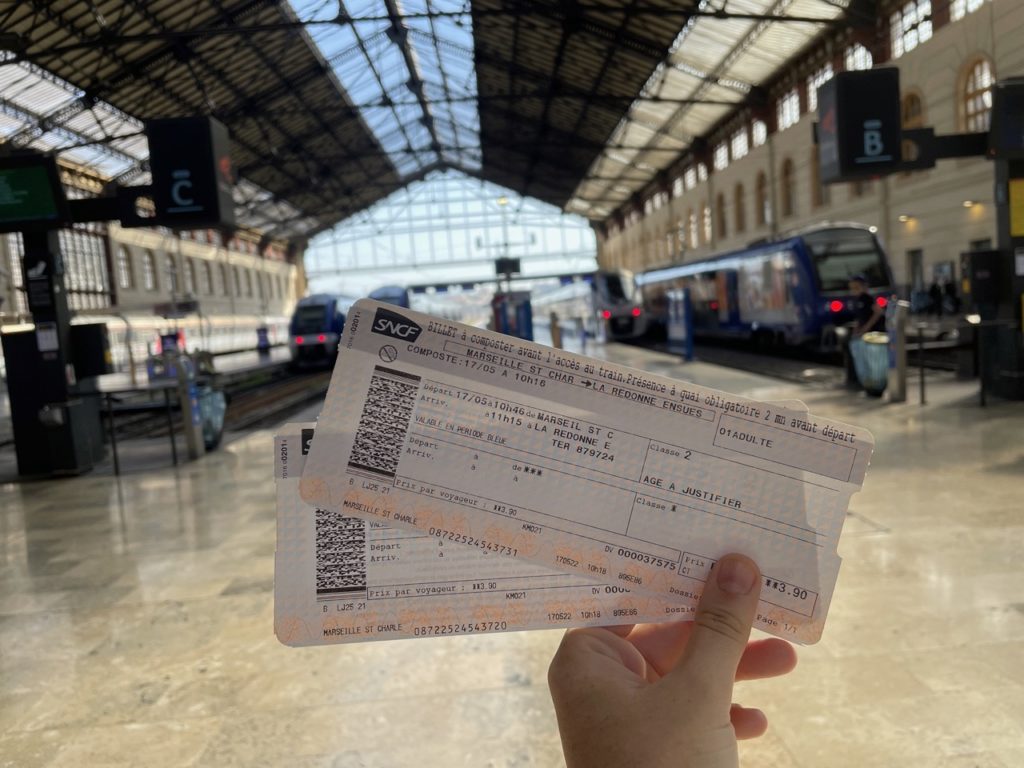
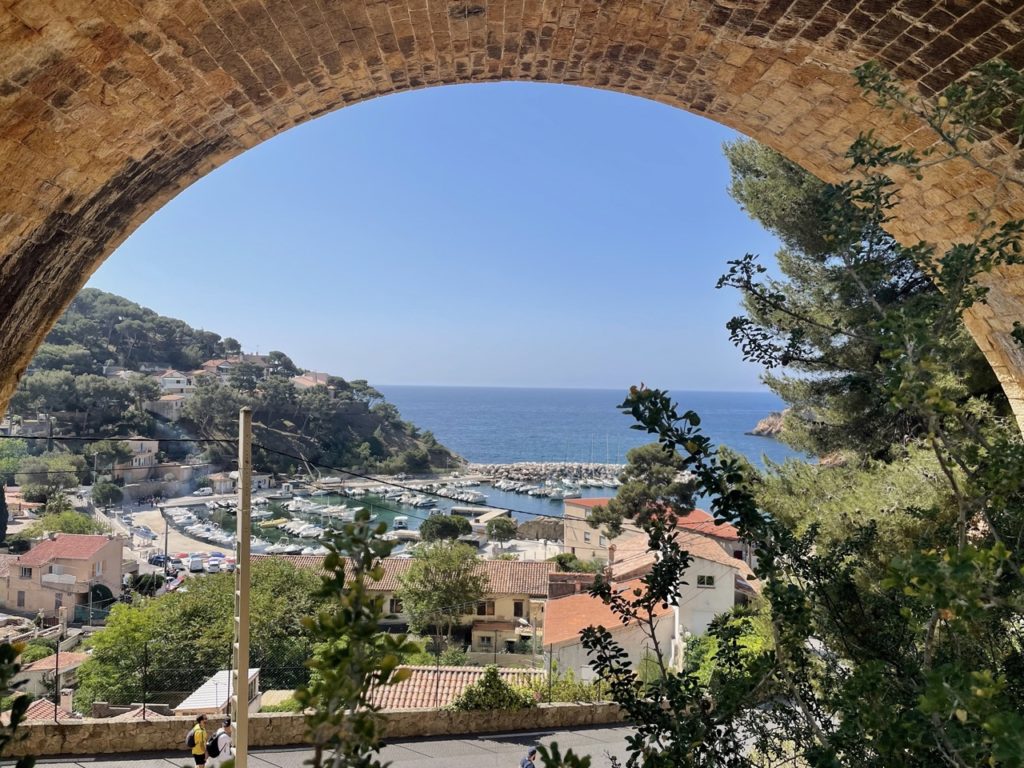
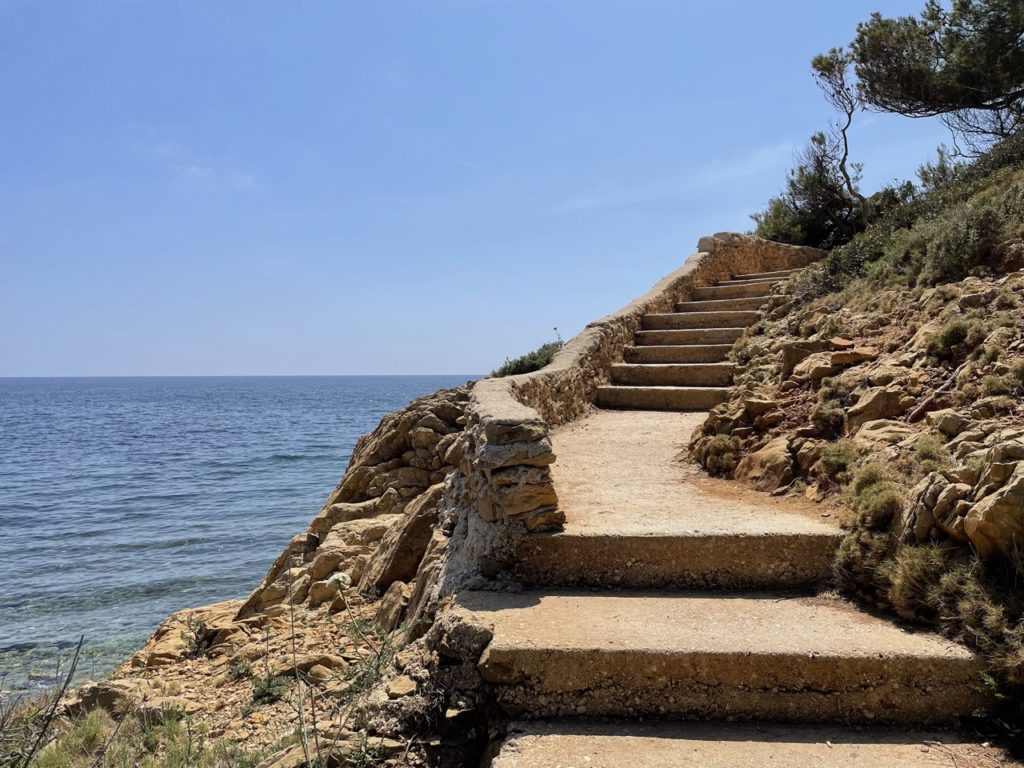
We spent the afternoon swimming in the crystal clear sea, sunbathing on the rocks, and vigorously reapplying sunscreen. It was, perhaps, my favorite day of the whole trip.
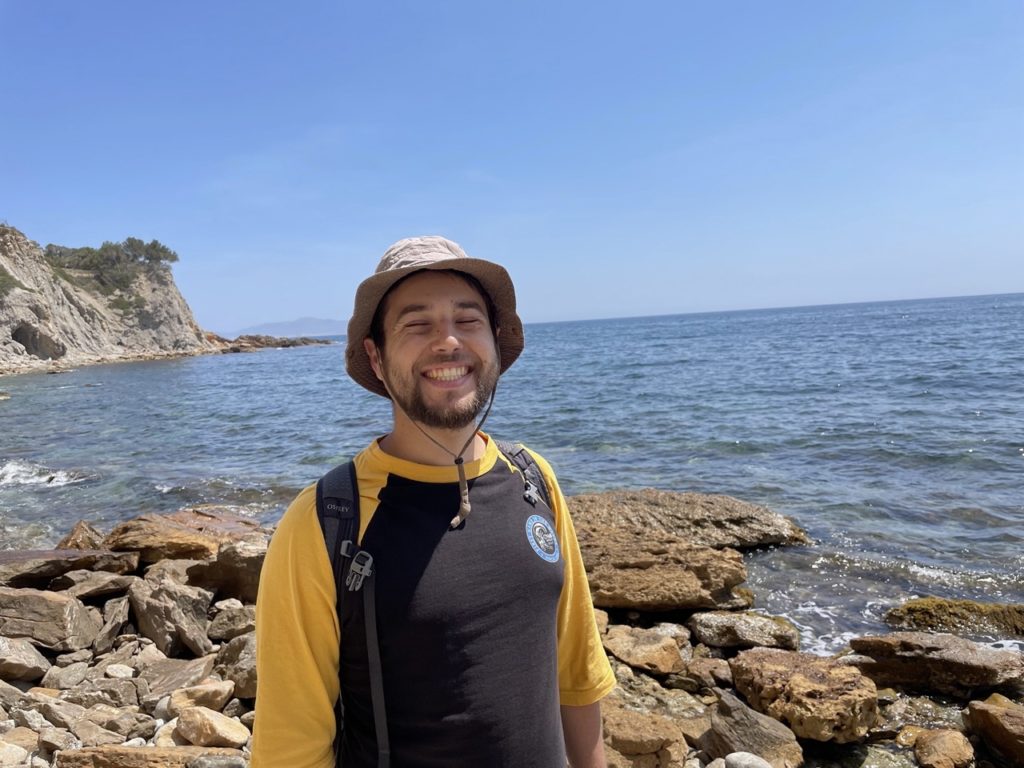
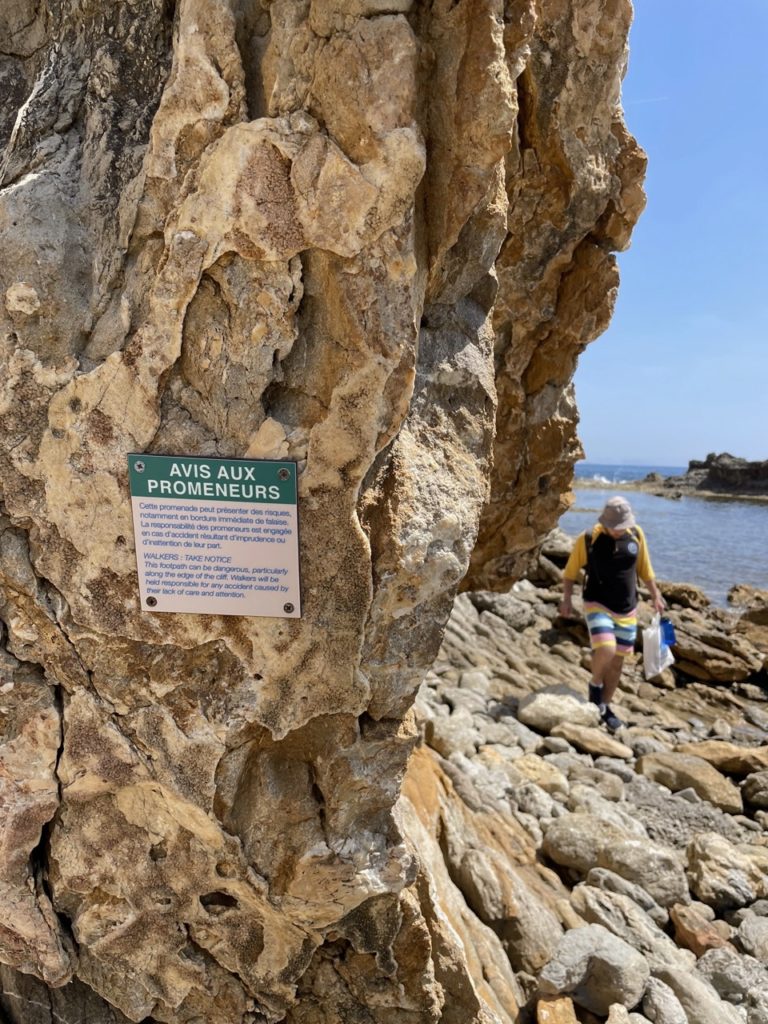
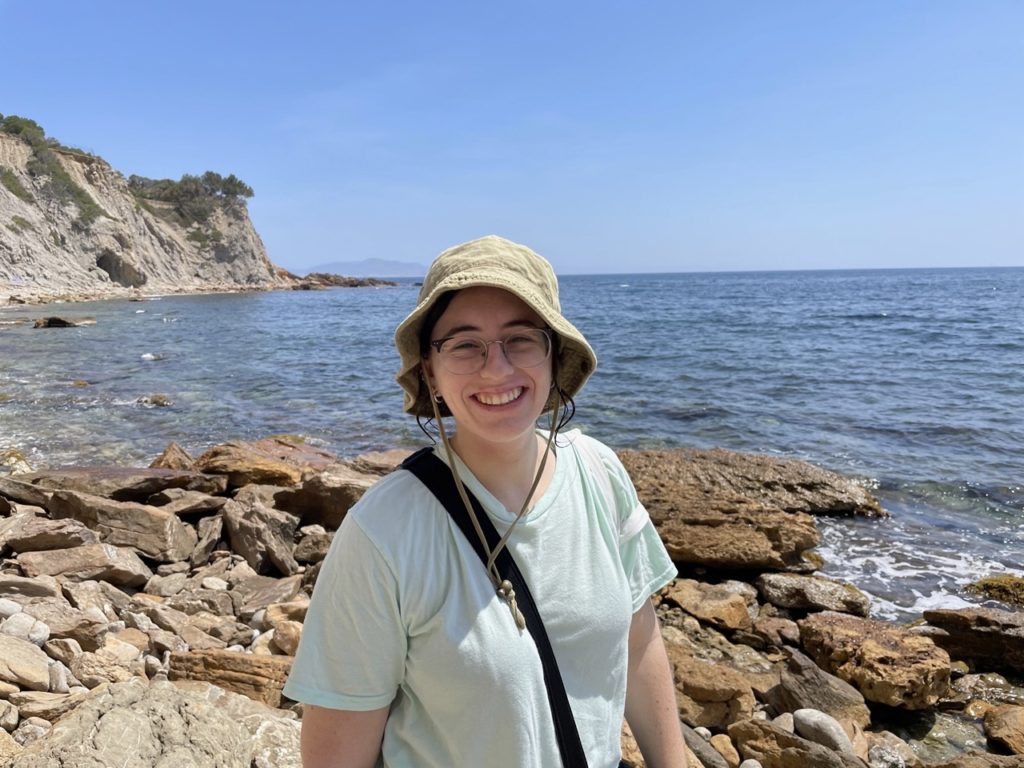
On another day, we journeyed to Arles. Once a provincial capital of Ancient Rome, Arles is famed for its many ruins, including two amphitheaters and a network of underground tunnels known as the cryptoporticus. Arles is also known for a second reason: in 1888, Vincent Van Gogh moved to the town and went on to create over 300 paintings and drawings during his eighteen-month stay. During our day there, Andrew and I interspersed climbing two-thousand-year-old stone arenas with visits to the sites that inspired some of Van Gogh’s most famous works, such as “Café Terrace at Night.”
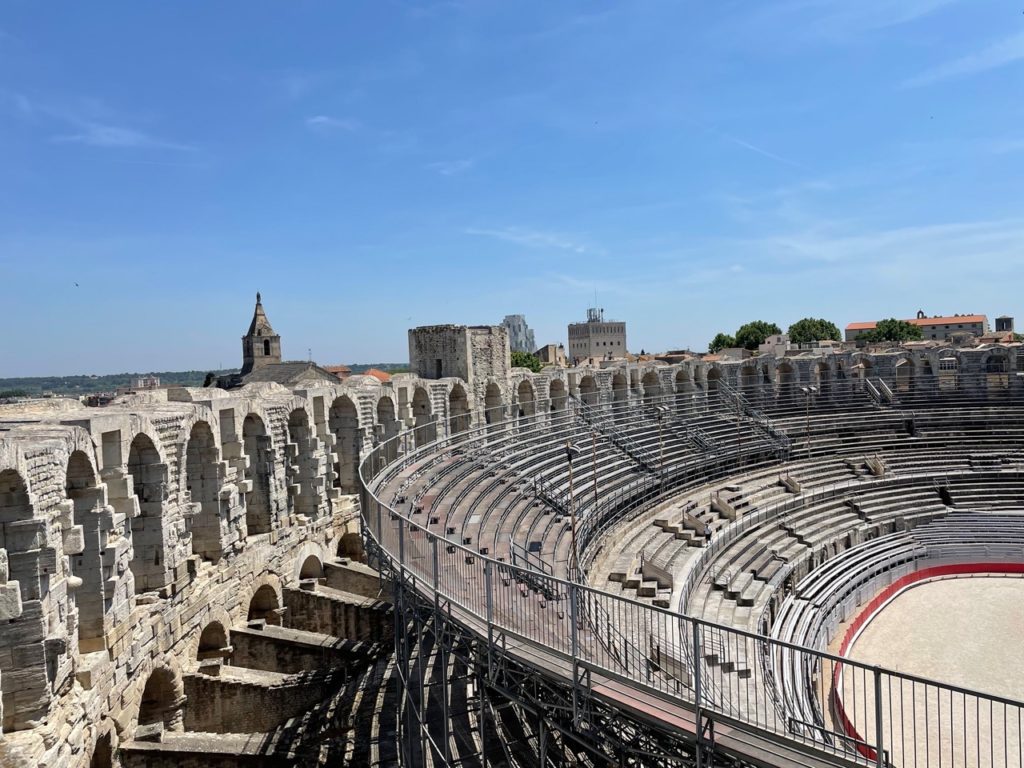
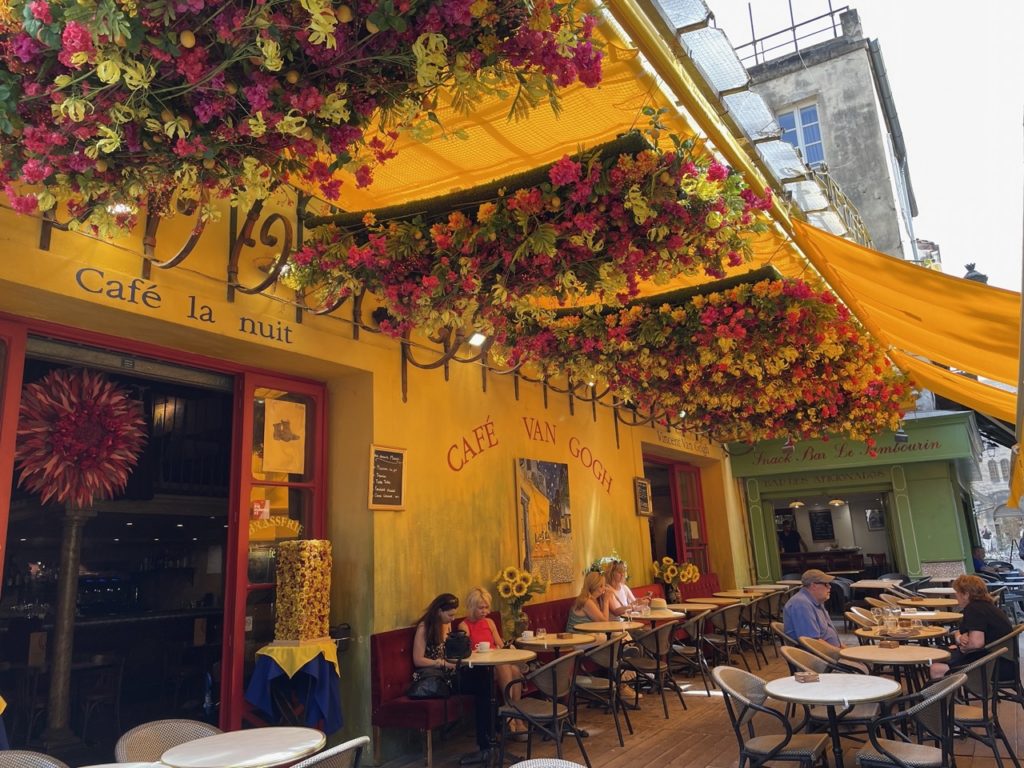
We explored the arched tunnels I mentioned before, a blissfully cool respite from the sun beating down aboveground. These dark, stone halls were built as a supportive foundation for the town’s forum (now gone) and may have also been used as slave barracks. Today the halls are lit only by sporadic floor lights and combined with the echoing sounds of distant footsteps and dripping water, the cryptoporticus has an almost eerie feel. Andrew had a blast dipping into any nook and cranny he could find, shining his phone’s feeble flashlight into the dark.
We also ventured into the Musée Réattu, a small art museum along the banks of the river. It didn’t hold a particularly vast collection, but there was enough there to capture our attention for an hour or so. My favorite work wasn’t in the main galleries at all but in a tiny adjacent chapel. I loved the way the broken statue felt like an accident, a forgotten relic of times long since past, even though I knew it was designed specifically for that space.
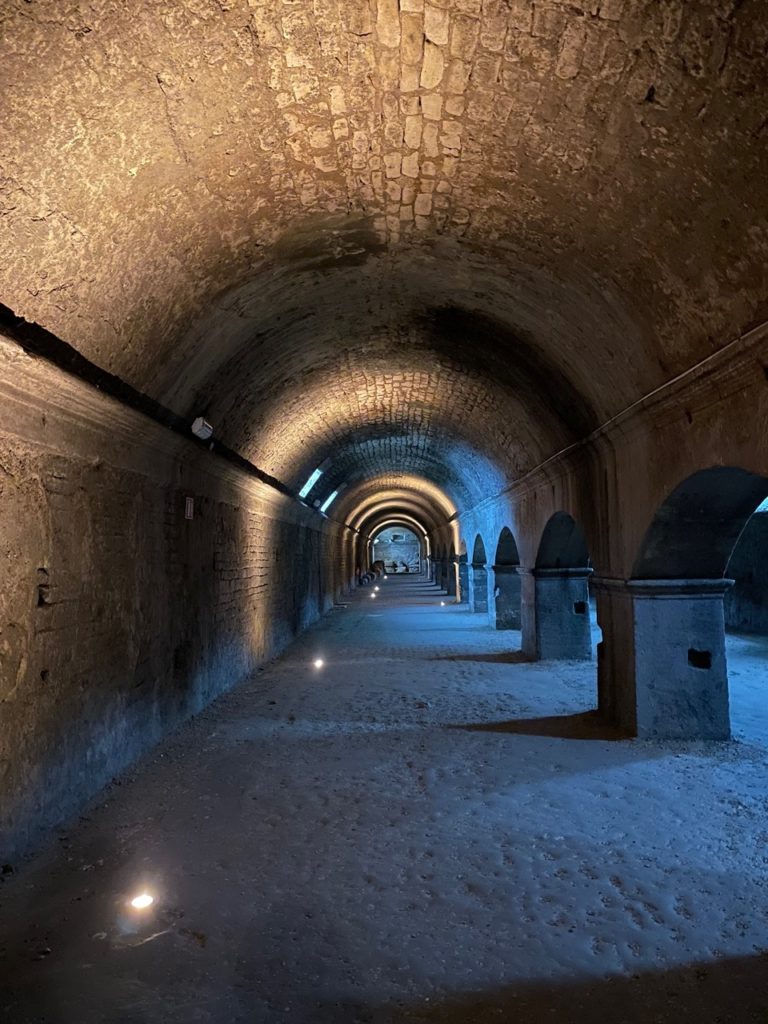
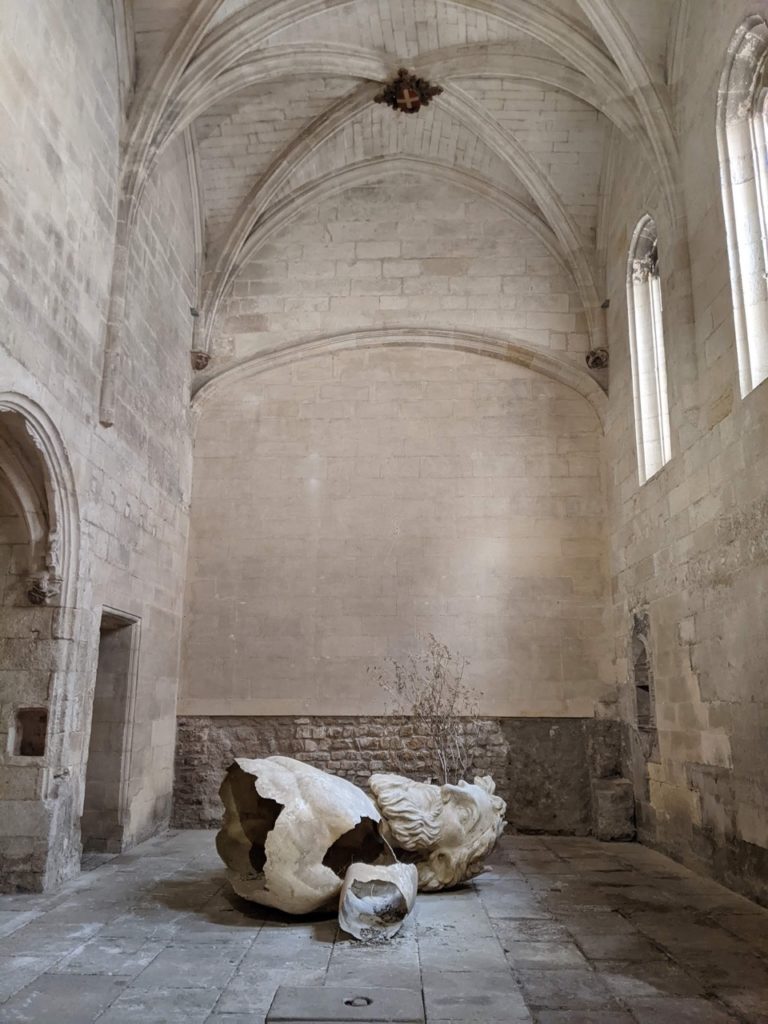
But Arles claims a special place in my heart for another reason altogether, and you can get a glimpse of it in the photo below. Behind where I’m standing, up towards the top of the seats, is the spot where my dad proposed to my mom. As I gear up to move to Paris in the fall, a city where both of my parents have spent considerable time, it feels more than a little surreal to walk in their footsteps. Without knowing it, I even signed a lease on an apartment a mere thirteen-minute walk from my father’s own first Parisian flat. It makes France feel both totally foreign and weirdly familiar at the same time.
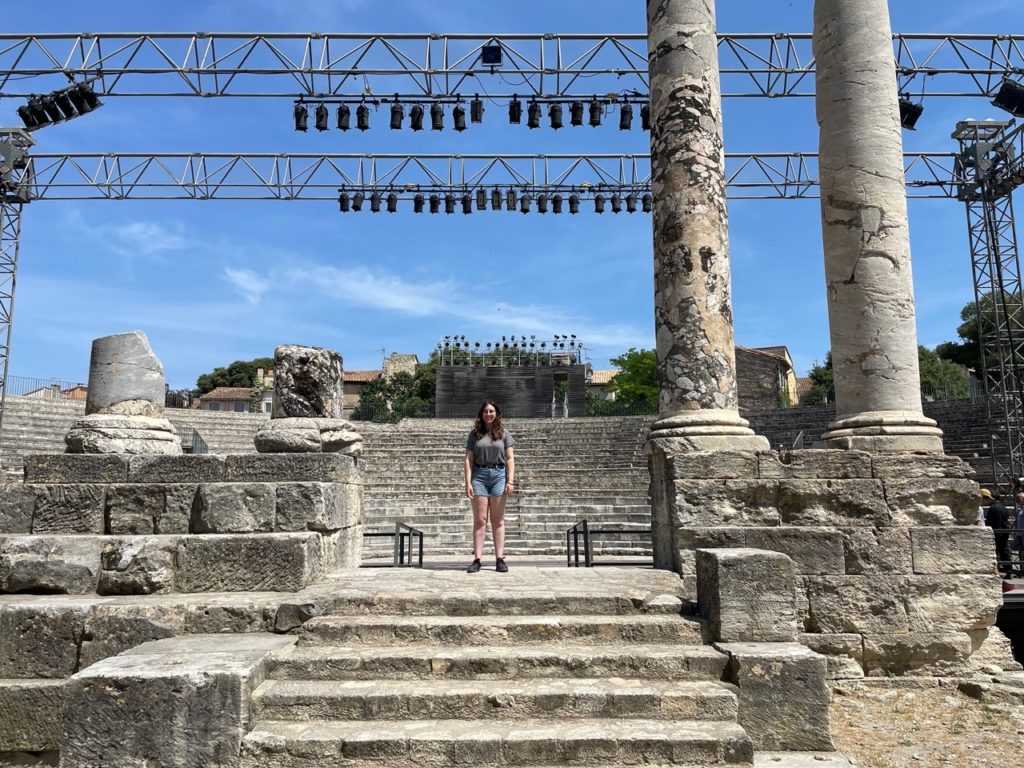
Back in Marseille, Andrew arranged for us to take a tour of a local soapmaking factory (Marseille is known for its soap). Situated behind a colorful storefront, the workshop was small and absolutely covered in slippery residue, and the tour was just 15 minutes long and in French. Nevertheless, we had a great time peering behind the scenes of this process and had to resist buying some soap on our way out (we had, and I cannot emphasize this enough, absolutely no room in our bags).
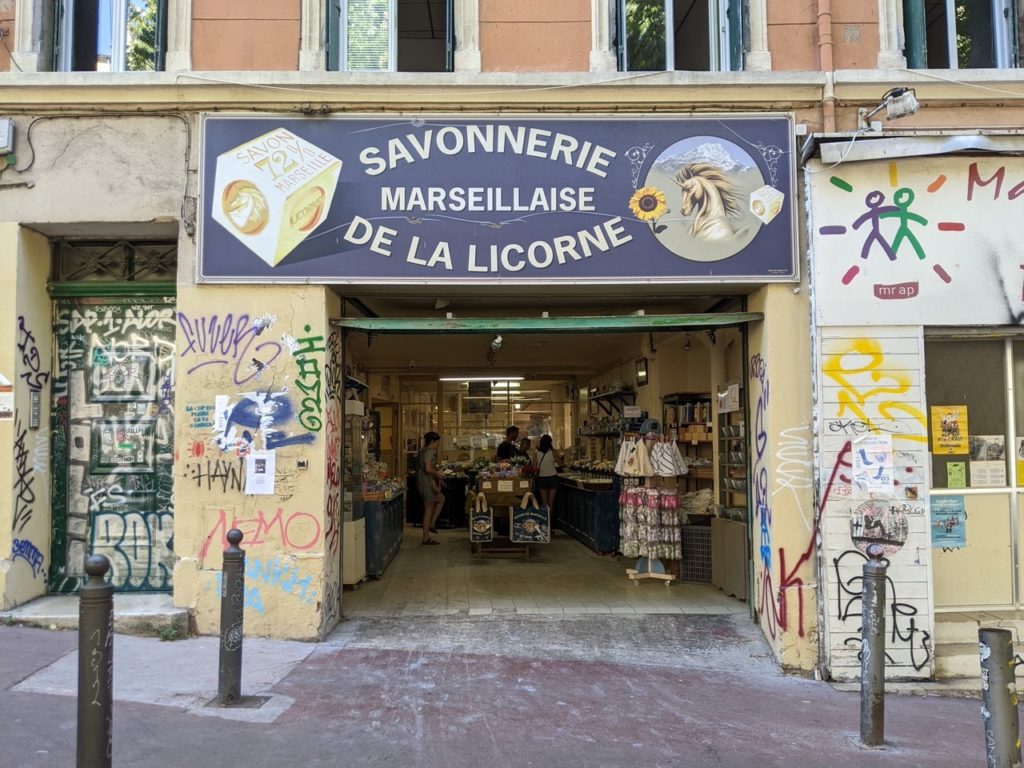
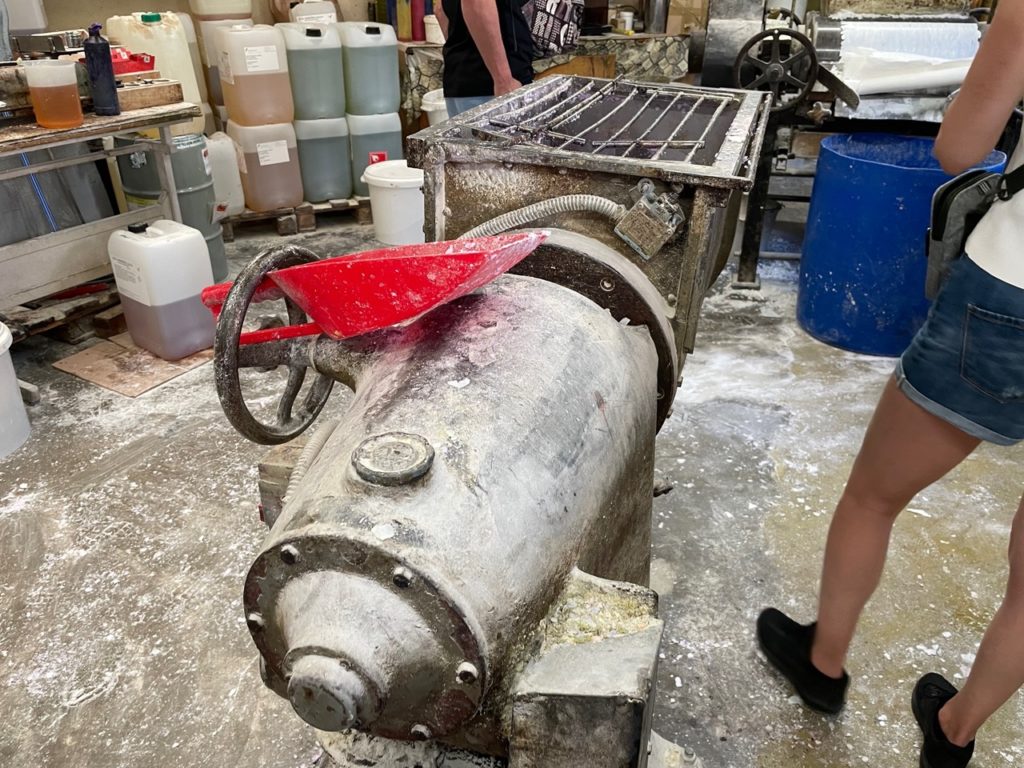
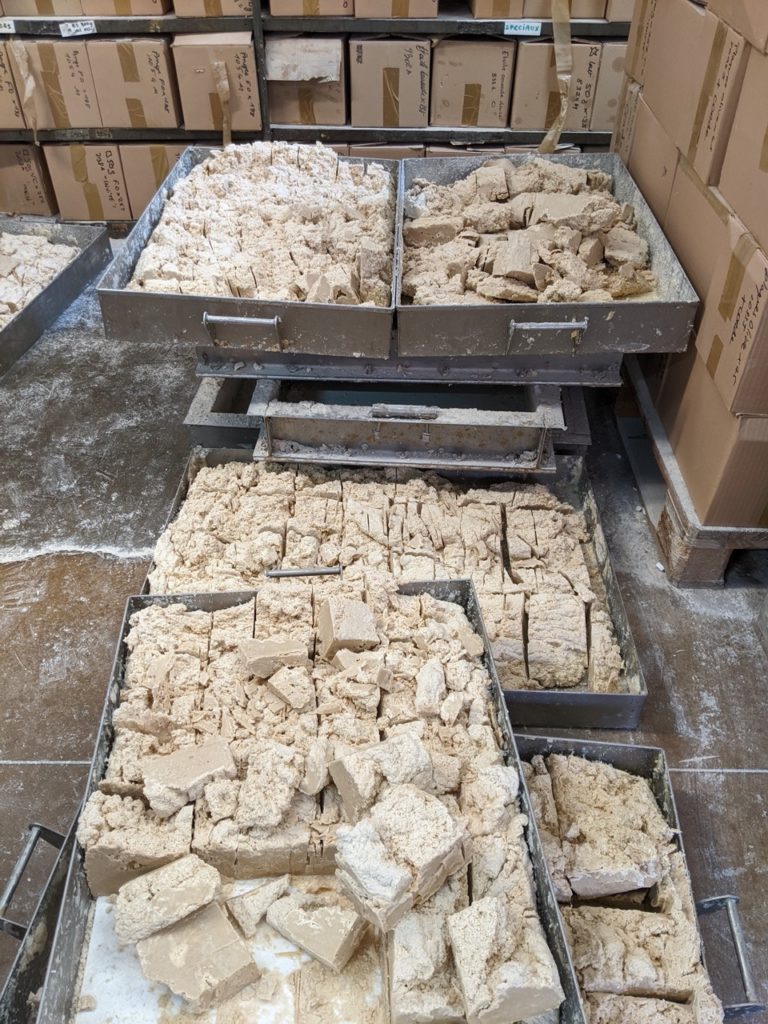

Then we were off again, this time down the coast in the opposite direction to Cassis. This town had been recommended to us several times during our travels when we mentioned we were heading to Marseille, although I’m not quite sure I understand why. I think it’s because it’s a bit ritzier than Marseille and has much more of that traditional French feel, with cobblestoned paths and colorful, wooden-shuttered buildings. I don’t know that I’d say it’s a must-see, but if you’re in Marseille and tired of the big city energy, it’s worth a visit.
We lucked out and arrived on the right day—and early enough in the morning—to see the Marché de Cassis in full swing. We strolled through the beautiful, vibrant farmer’s market, picking out goodies for a light lunch.
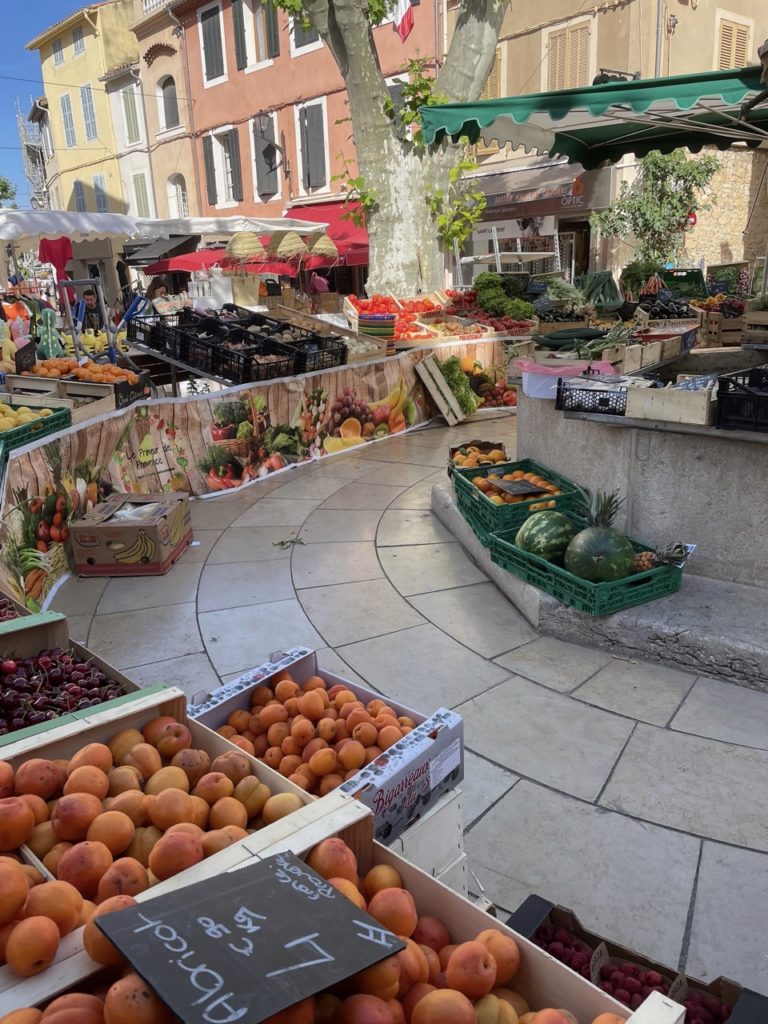
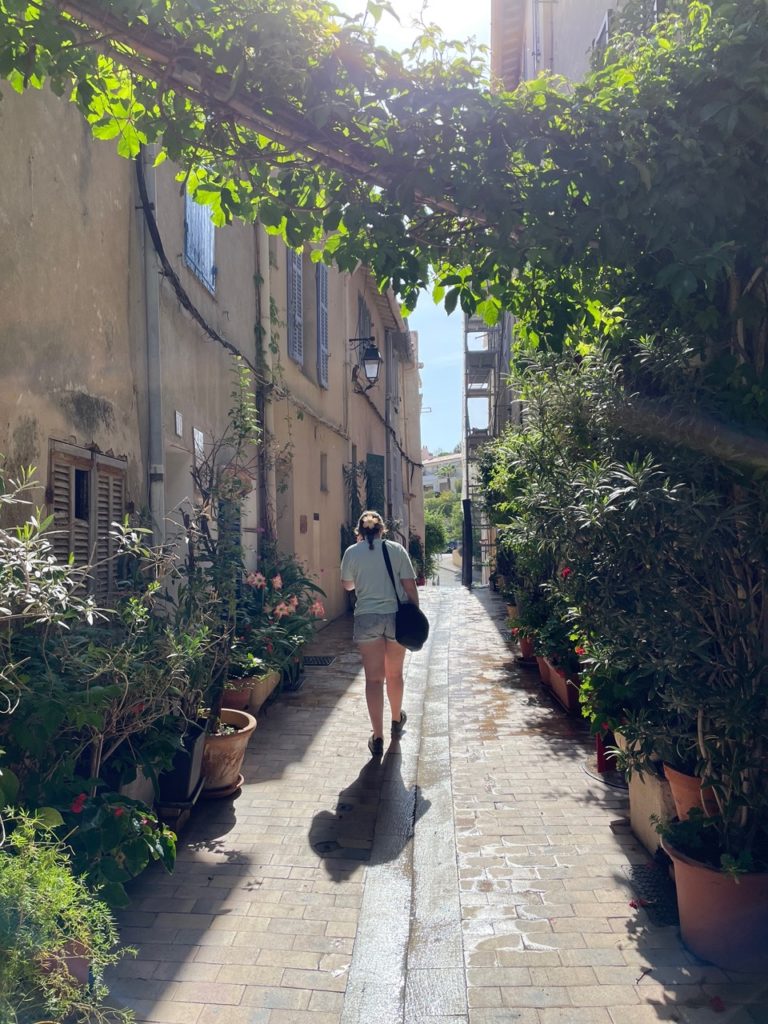
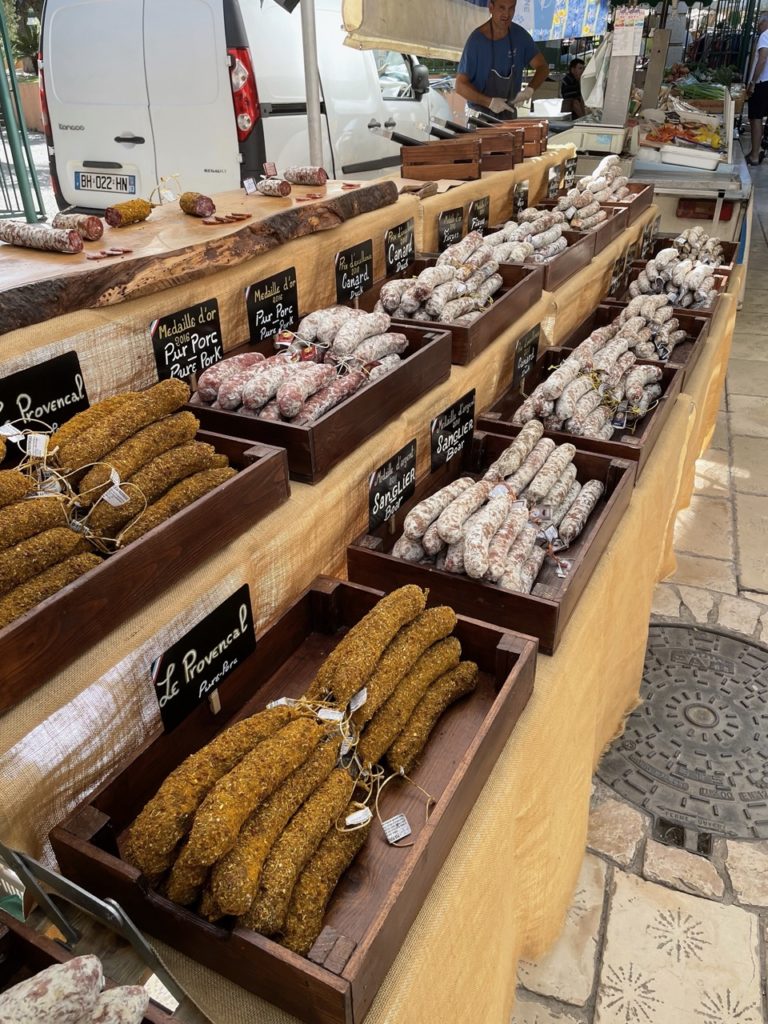
Then we hit the beach. It was hard to believe, but I think Cassis was even more beautiful than La Redonne. Atop the tree-lined hills sat the stunning cliffs of les Calanques, and staring up at them while floating in the sea took my breath away.
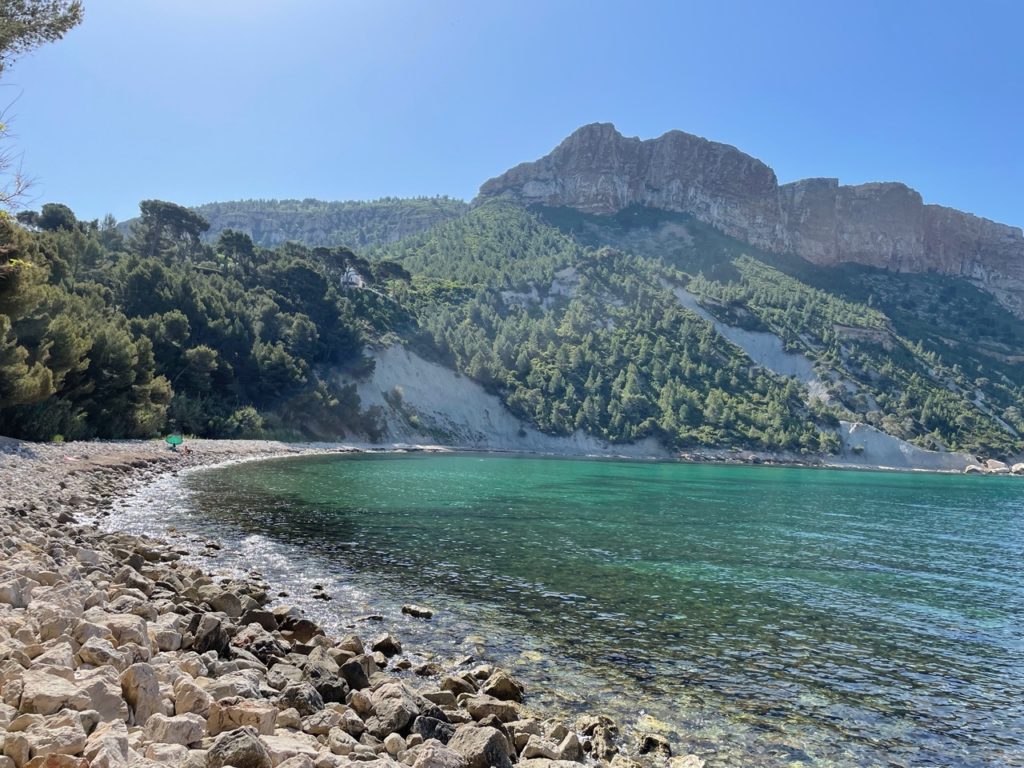
After hours and hours of alternating between laying on our beach towels and swimming in the water, we eventually ambled back to town in search of a snack and some shade. I had the beginnings of what would develop into a medium-grade sunburn but I didn’t know that yet, so everything still felt pretty perfect. Plus, the enormous bowl of ice cream and peaches we got didn’t hurt.
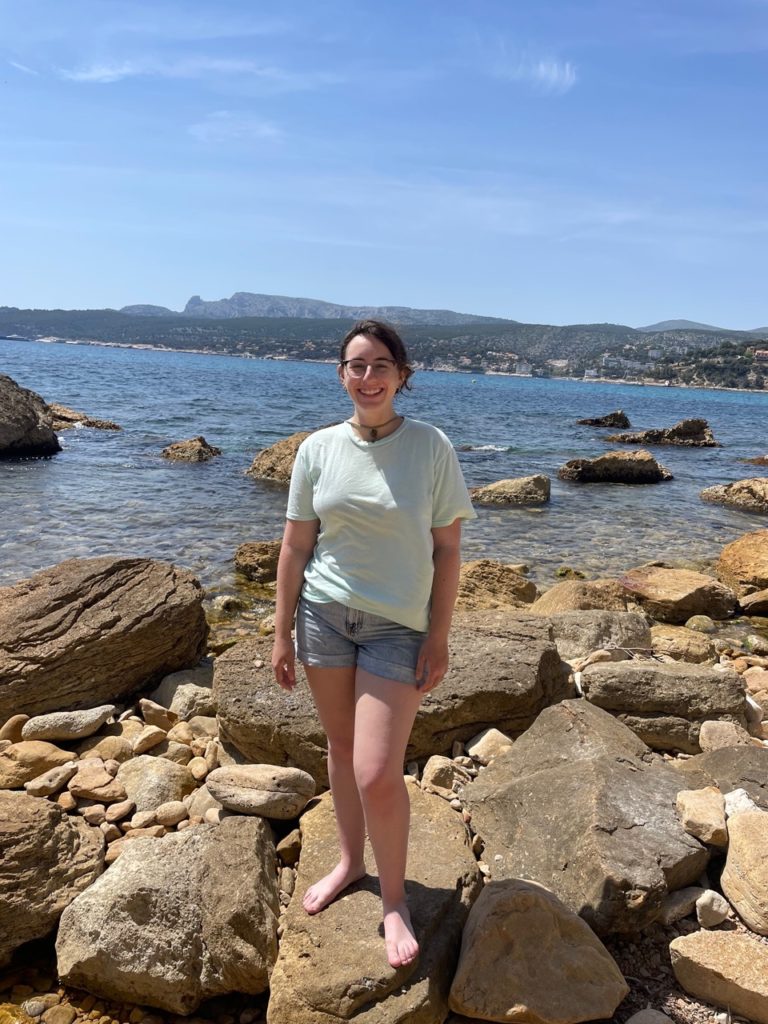
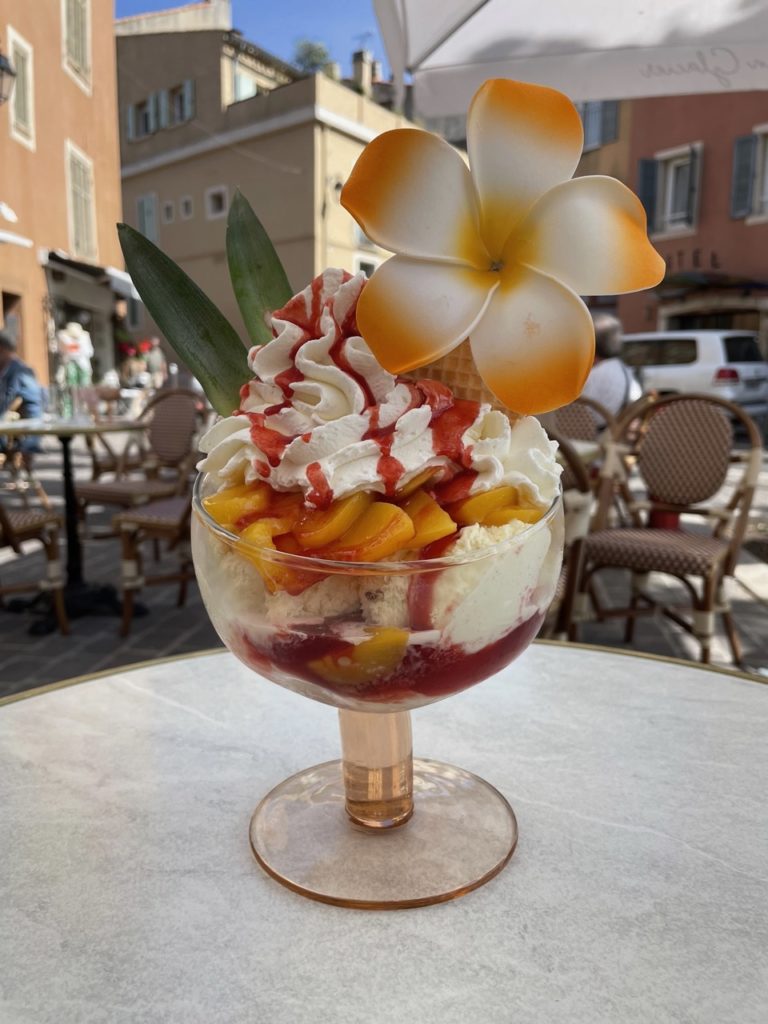
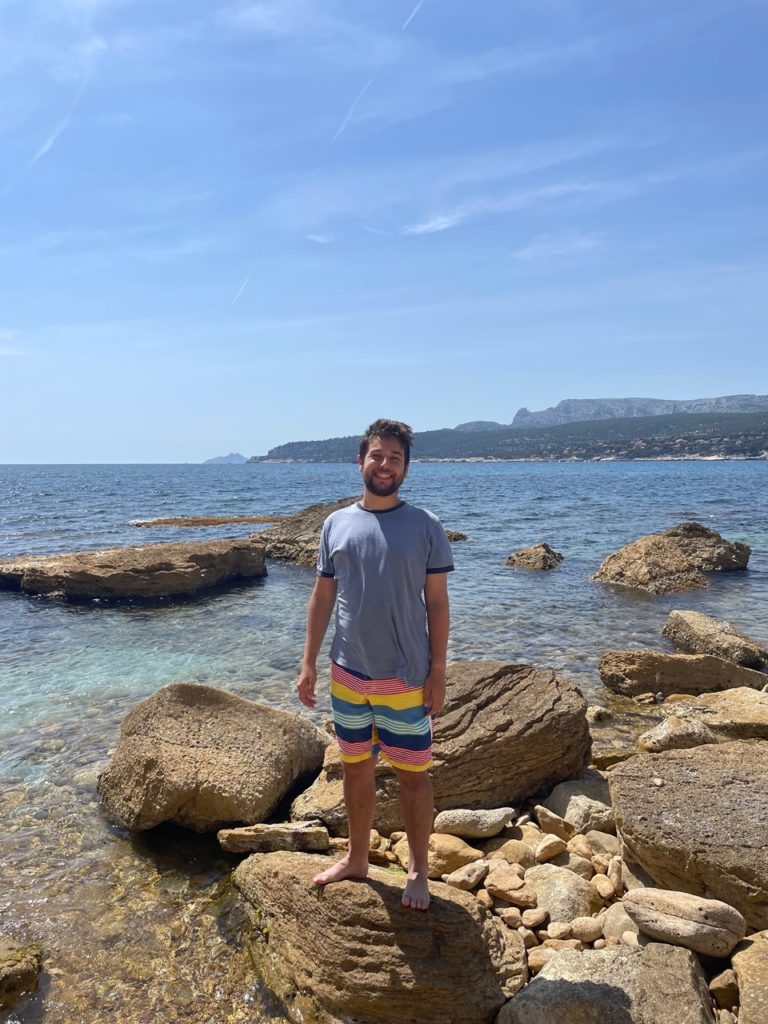
Back in Marseille yet again, we sought out a proper dinner (as delicious as the ice cream was, it didn’t quite do the trick). Maybe we were feeling nostalgic for Spain or maybe we just snagged a great deal through TheFork (see last post), but somehow we ended up at Bistrot Andaluz. Neither Andrew nor I had wildly high hopes (after all, how could it compete with the stuff we’d had just weeks before?) but were pleasantly surprised. The various quintessentially Spanish tapas were delicious and the 50% off we got through TheFork only made the food taste that much better.
Another food standout from our time in Marseille (and another great TheFork find) was Yo! Street Food, a burger and hot dog joint that focused on local and organic ingredients. Even the mustard and ketchup were made in-house! I enjoyed my hot dog covered in spicy mustard, crispy onions, and shredded carrots (it worked!), but Andrew loved his burger. It was, he reported, the best of his life! Now that’s high praise.
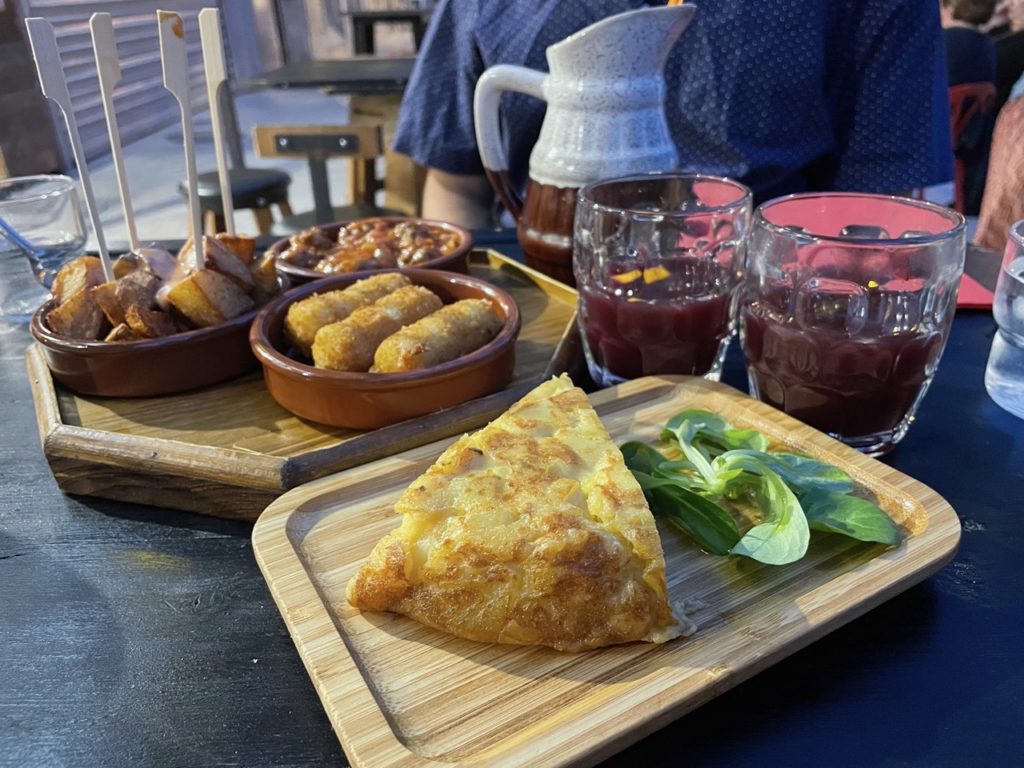
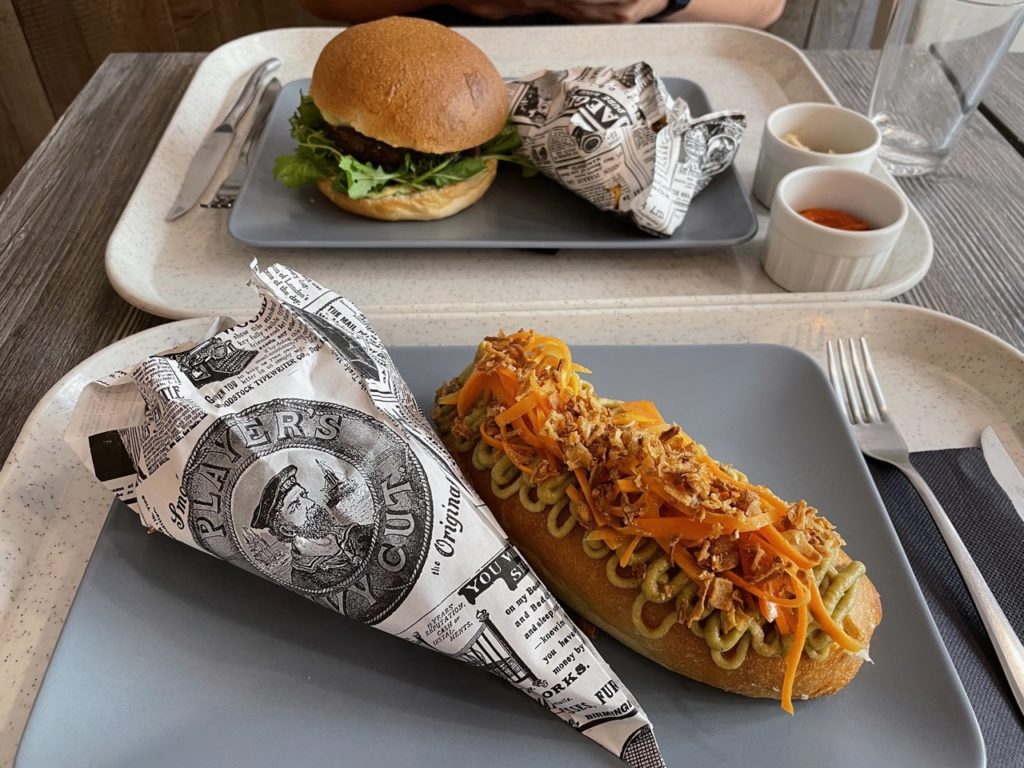
Despite the fact that our time in Marseille was drawing to a close, Andrew and I had one last trip to take before we flew home. On our last full day in the city, we took a bus to the city of Aix-en-Provence. Unfortunately, we arrived a few weeks too early to see the nearby famous lavender fields in bloom but there was plenty else to do in this sweet university town. Or, at least, there probably was. Far away from the seaside, Aix doesn’t benefit from the same cooling coastal breezes as Marseille and by the time we arrived in the late morning, the temperature was already nearing 90 degrees Fahrenheit. Sweating mere moments into our day, Andrew and I realized that we would have to keep the exercise, even strolling down the street, to a minimum.
Amazingly, we appeared to be relatively alone in this conclusion as one of the first things we noticed after leaving the bus station was that a half Ironman was in full swing! I couldn’t believe it, I almost passed out just watching everyone run.
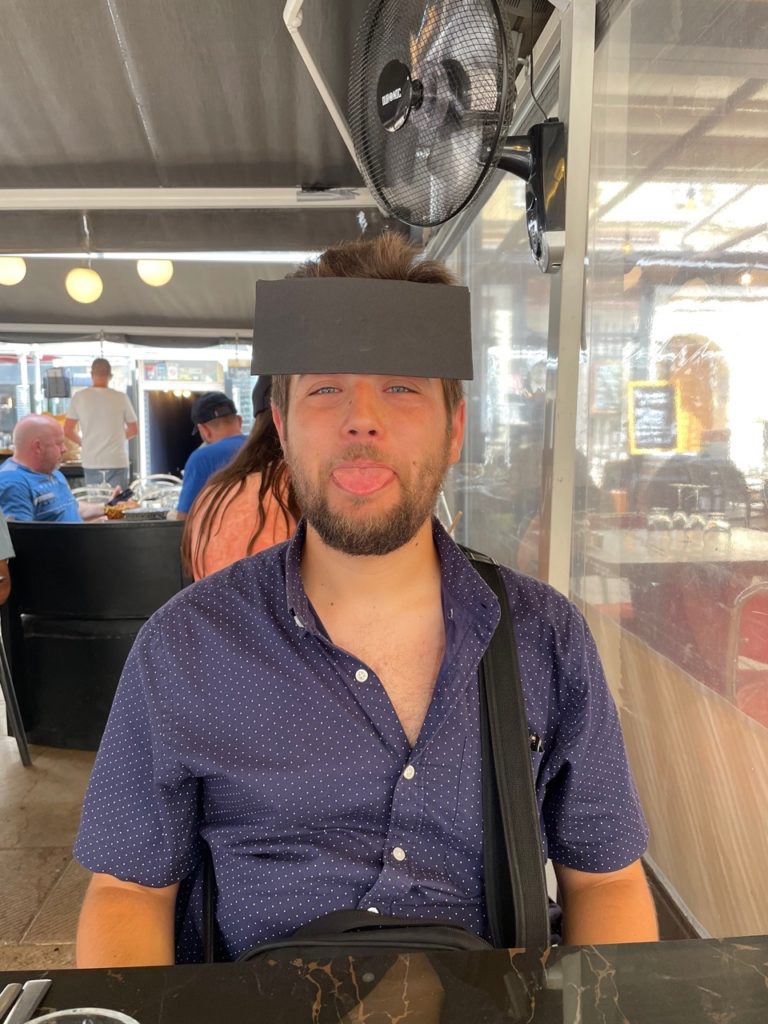
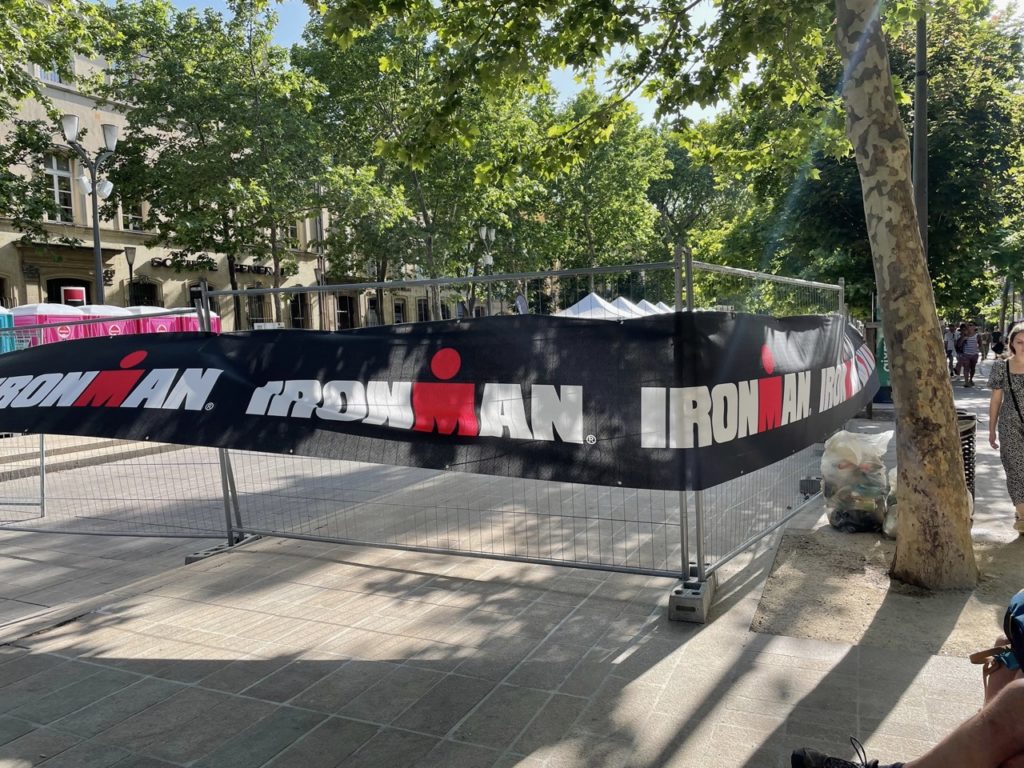
We had come all this way (a grand total of thirty minutes), though, and we didn’t want to totally waste our day, so we got some lunch and rallied. We also devoured some delicious ice cream (too quick to even take a picture!), which helped for all of about fifteen minutes.

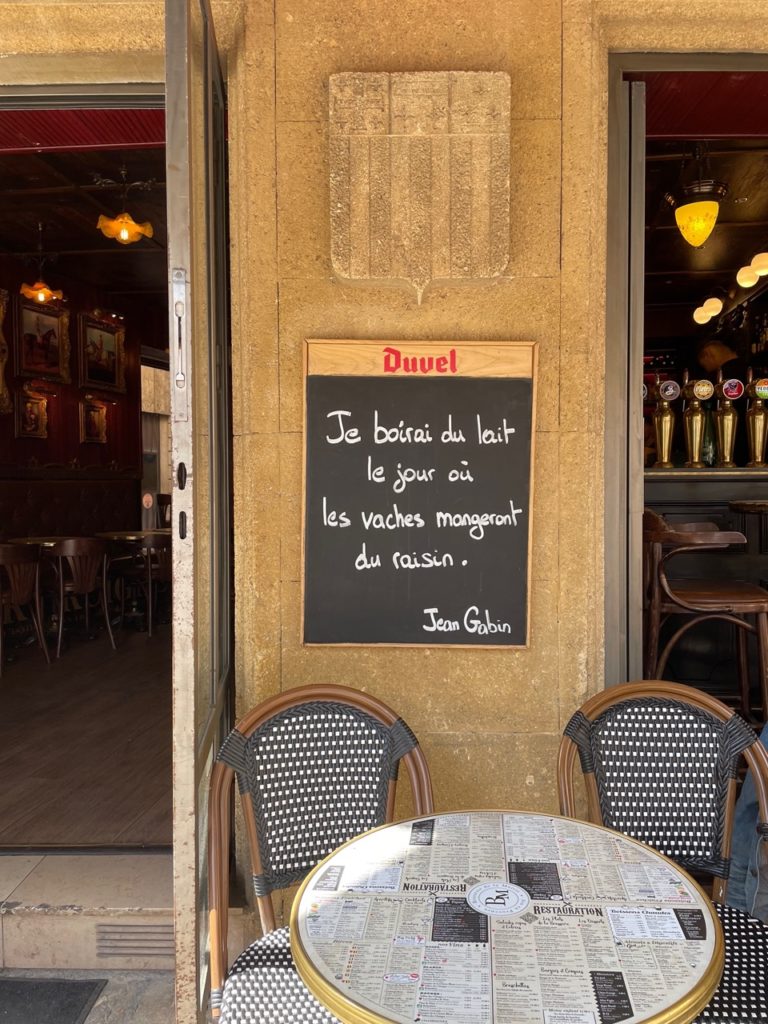
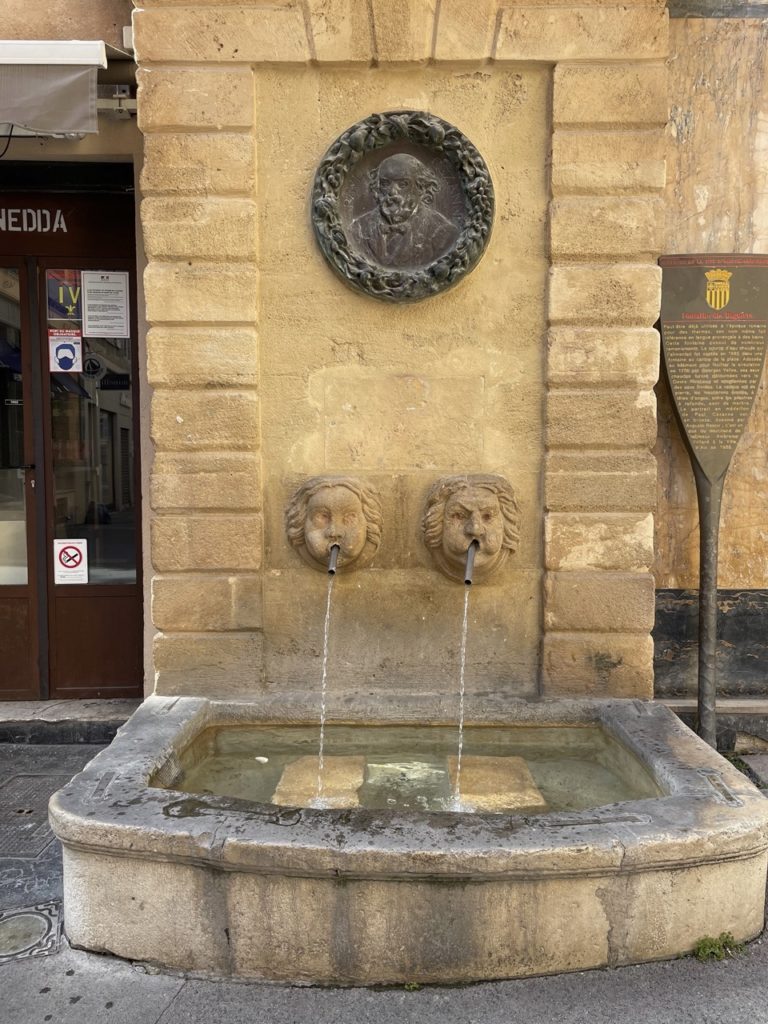
One thing that kept us going was the goal of reaching the last studio of painter Paul Cézanne. Google Maps said the house was only a fifteen-minute walk away, but it took us closer to half an hour. We did spend a considerable amount of time cooling off in a church, though.
The atelier itself was a worthwhile stop, though it was rather small. The whole tour comprised just one room, Cézanne’s workspace, and I was surprised that the museum didn’t have any paintings from the artist. It would have been neat to see the painted versions of the still lives we saw recreated before us. That being said, there was a comprehensive audio guide available in several languages and the entrance also included access to the house’s gardens. And it gave us something to do indoors, which was desperately needed.
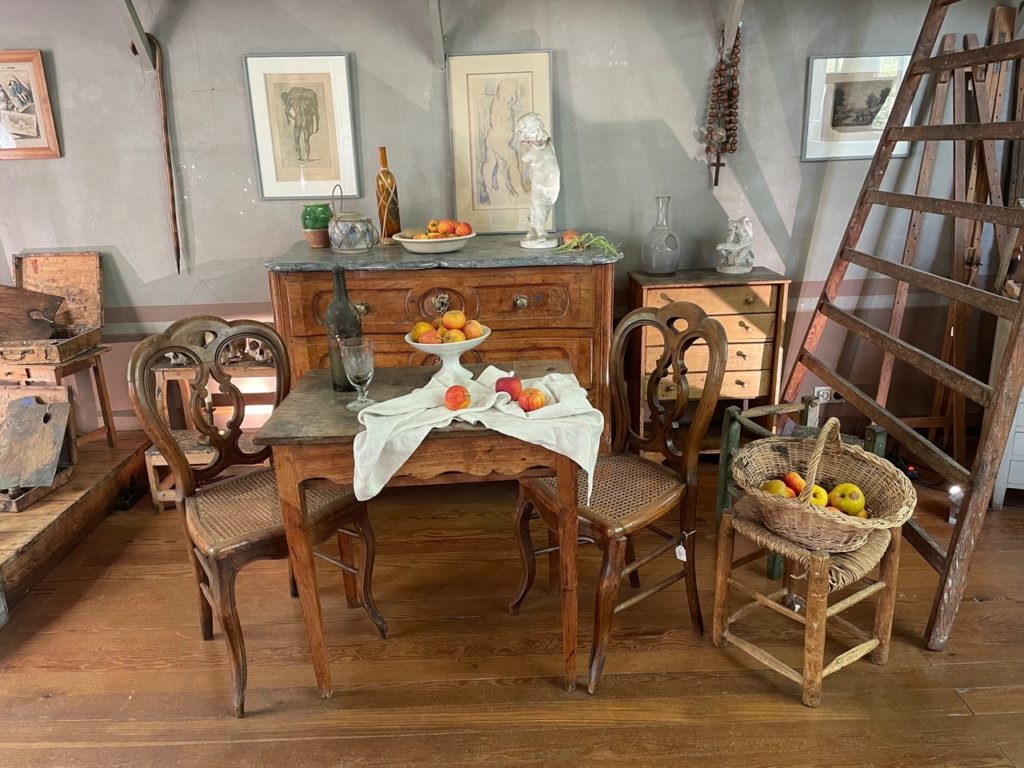
And then, just like that, it was done. We flew back to Madrid on Monday, May 23. We had a hotel room in the neighborhood nearest the airport and ventured downtown just once to get lunch with a former professor of Andrew’s and to get COVID tests to clear us to fly home.
We also happened to stumble upon a Frida Kahlo exhibit on the walk back to the metro station, which was enjoyable but a bit weird. The actual paintings, drawings, and photographs—as well as the lengthy descriptive plaques—were excellent; however, the building was oddly constructed and confusing, and the woman at the ticket desk made us produce both our passports and our student cards to prove we were under 25. Before giving us the reduced student fee, she studied both intently and seemed loath to believe we could possibly be eligible. I’ve never faced such stringent security trying to get a discount before! And then they got quite mad when I tried to take a picture of anything, so I don’t have any of the exhibit to share with you. But if you happen to be in Madrid before November 30, I’d highly recommend stopping by the Casa de Mexico and checking out Frida Kahlo: Alas Para Volar (Wings to Fly). Just don’t try to pretend to be any age but your own!
Then, on May 25, Andrew and I got on our flight back to New York. We still had a three-train journey from JFK to Newark, an overnight stay in New Jersey, and an early morning flight back to Asheville to go, but by that point, the trip was well and truly over.
Below is our final selfie in Europe, taken minutes before finding our seats on the plane.
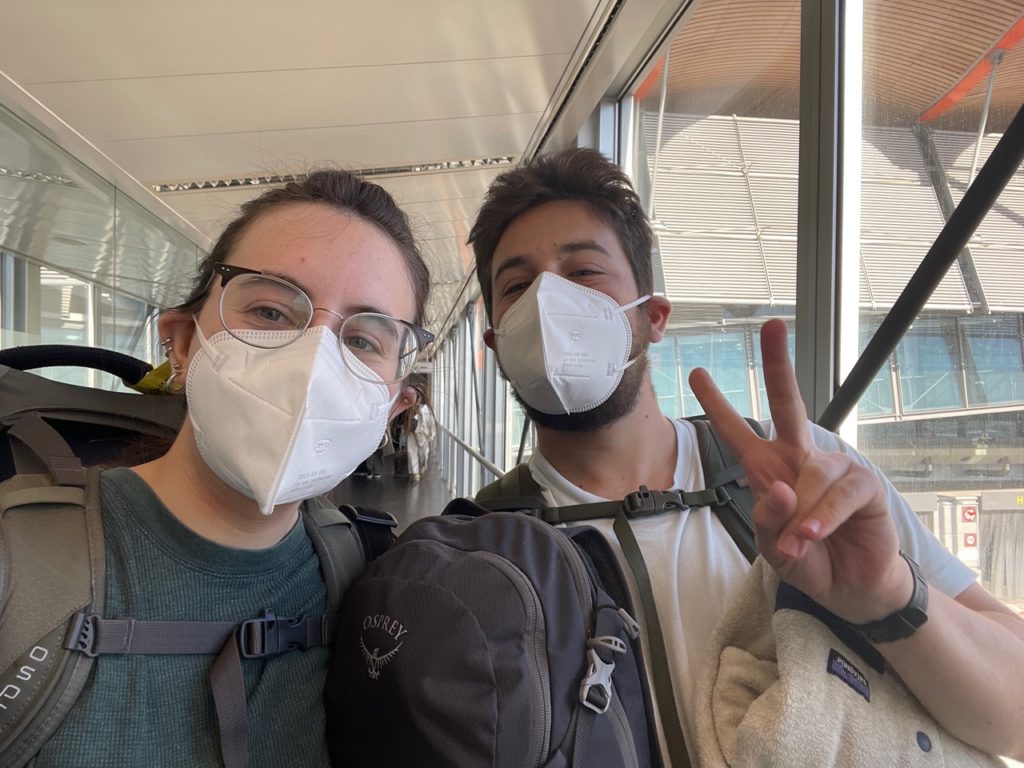
And here we are. I write to you from my parents’ couch in Asheville and Andrew is already back in LA. In the fall, I’ll pack up and move to my 96 sq ft apartment in Paris and Andrew will start a new job in Chicago but for now, those futures feel far away. I’m still savoring the last three months and all the joy, frustration, good food, and long days they held. I’ll probably see you again shortly for a sort of summary post but if not, thanks for sticking around and giving this blog a read. I hope it helped you feel a little bit like you were traveling along with us. At the very least, I hoped you enjoyed the photos.
In love and adventure,
E
A wonderful completion, and it’s been a grand trip that we’ve treasured spending with you. Much love!
Et voilà, le voyage est terminé ! Merci Emma et ‘Andrew de nous avoir fait partager vos visites culturelles et culinaires espagnoles, portugaises et françaises .
Prêts pour de nouvelles aventures en août 2022 ? Profitez bien de votre jeunesse.
Bises à vous deux.
Christine et Jacques
Reading your posts was like being there!